Lyre ficus: description, tips for choosing and care

Ficus lirata is an ornamental plant that fits perfectly into any interiors from classic to the most modern. It also looks good at home and underlines the elegance of the office center.

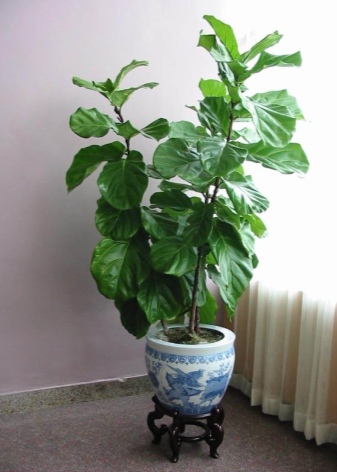
Description
The homeland of the lyre ficus is the hot African continent. In the natural environment, the plant reaches 13 meters, but as a houseplant, it is much lower - on average, a lyrate grows by 2.5-3 m, and when carrying out decorative pruning, you can even get a mini-version of this unusual tree.
This unusual variegated ficus got its name due to the external resemblance to the silhouette of a lyre. Lyrata is distinguished by rather wide leaf plates with wavy edges and well-distinguishable veins of a pale green color - they stand out strongly on the common dark leaf plate. The top of the leaf plate is rounded, and the base is more narrowed, the length of the leaf of an adult plant is 40-50 cm in length and about 20-25 cm in width, the coating is glossy, shiny. In the middle, the leaves are pulled together "at the waist", due to which they take a shape reminiscent of a musical instrument.
The trunk is grayish, as a rule, the stem is straight and rough.



How to choose?
The most common varieties of lyre ficus are multiple plants.
- Columnaris - this is a tall columnar plant, it is most often used for arranging winter gardens, greenhouses, as well as for decorating public premises.


- Little fiddle - a medium-sized shrub, very popular in offices.
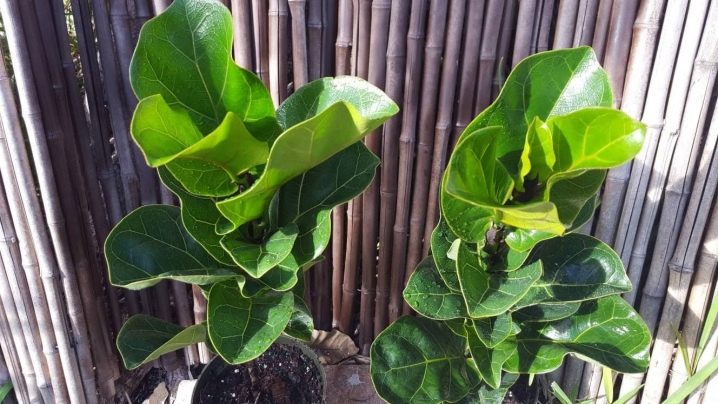
- Bambino - a short flower with a relatively small crown and rather small foliage. It is mainly purchased for home cultivation.
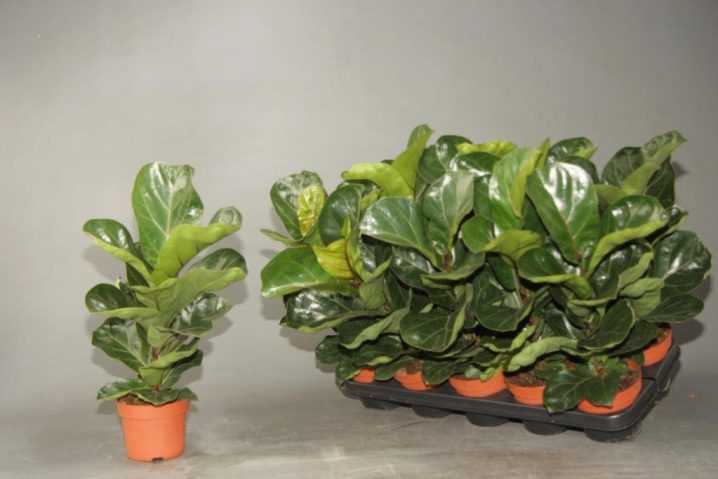
Large ficuses grow rather quickly and reach a significant height. They require a lot of space, therefore they are not suitable for decorating small apartments. In small rooms it is worth giving preference rather compact variety "Bambino" - it takes up very little free space.
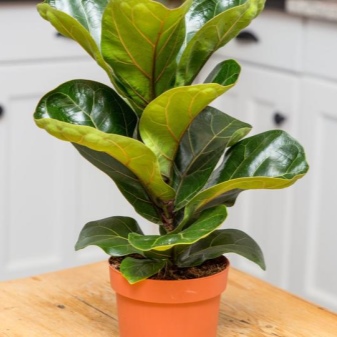

How to care?
In order for the lyrata to delight you for a long time with its exotic appearance, the conditions necessary for its normal growth and development should be observed.
Seat selection
Tropical ficus really needs intense lighting, but in the natural environment this tree grows mainly in the middle and lower tier of the jungle, therefore it is used to diffused lighting - direct sunlight can be detrimental to the plant.
When grown at home, it is advisable to place it near the western as well as eastern windows, however, you can place the litra on the south side, while additional dimming of the light will be required - usually window films or light tulle are used for this, protecting the decorative tree from burns. But on the north side, it is better not to place the ficus, since there will not be enough light for the full growth of the flower.
However, if there is no other way out, then you can provide the plant with additional illumination, especially in the autumn-winter season, when the daylight hours are rather short.


Keep in mind that this plant has difficulty adapting to new places and therefore does not tolerate movement well.To avoid stress for your green pet, you should decide on a constant "angle" for the tree before buying, and not rearrange it in the future.
Lyre ficus is used to hot climates, so it needs warm rooms. The optimal mode in the summer is +25.30 degrees, and in winter the temperature can be lower, varying from +15 to +20 degrees. Sharp fluctuations in temperature are categorically unacceptable; the plant reacts sharply negatively to such changes in environmental conditions.
If the pot with ficus is on the floor, especially on the ground floor, then in winter you should put a stand that will protect the root system of the tree from hypothermia. If this is neglected, then the consequences for the flower will be the most dire.
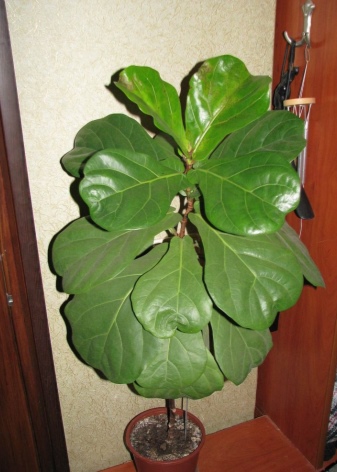
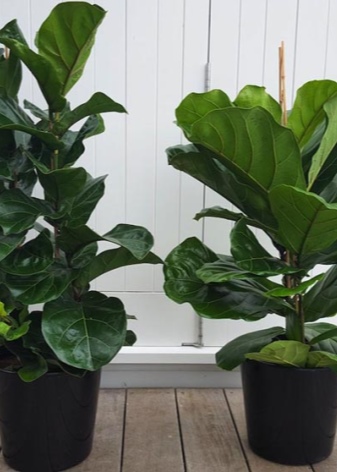
It is necessary to protect the ficus from any gusts of wind and drafts, therefore it is not recommended to install it near balcony doors. Placing near heating devices is also not recommended - this causes the ficus to dry out.
Special attention should be paid to maintaining the required humidity level. Like any tropical plant, Lirata prefers well humidified air. However, it is not possible to provide conditions close to natural in a dwelling, therefore it is possible to create conditions that resemble relatives spraying the plant 1-2 times a day, as well as periodically arranging for him a warm shower.
If possible, try to turn on the humidifier for a couple of hours, and if it is not available, turn on the indoor fountain.
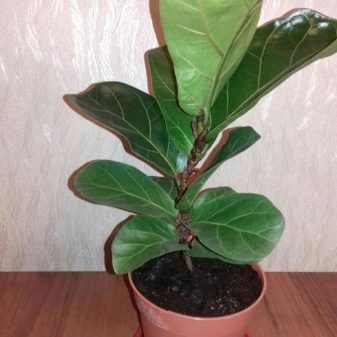

Ficus responds well to fertile lands with a loose structure and a neutral reaction. A suitable soil mixture can be purchased at any store, but if you wish, you can compose the substrate yourself, for this they mix:
- turf - 1 part;
- sheet soil - 1 part;
- river sand - 0.5 parts.
A little crushed charcoal should be added to the prepared soil, it enriches the earth with potassium, and also helps to disinfect the mixture.
Keep in mind that if you collected the main components of the soil yourself on the street, then they must be calcined in a pan or at least treated with boiling water, otherwise there is a high risk of infection of the ficus with pests, viruses and fungi preserved in the ground.
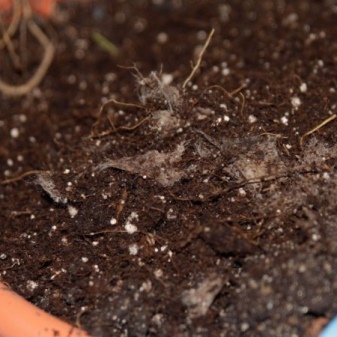

Top dressing
Lyre ficus is a fairly fast-growing plant, so it constantly needs feeding. The need for nitrogen is especially great for lyrate, this element is necessary to maintain the splendor of the bush and the rich color of the deciduous part. Urea is considered the best source of nitrogen; you can buy it at any gardening store and use it strictly in accordance with the instructions.
Phosphorus plays an important role in maintaining the full development of the ficus, it has a very beneficial effect on the root system, making it stronger and stronger. This mineral is obtained from superphosphate.


It is necessary for lyre ficus and potassium, thanks to the presence of this component, the cellular immunity of the plant is ensured, and all metabolic processes in the tissues of the plant are normalized. The best source of potassium is common wood ash. To feed the plant, half a spoon is diluted in a liter of water, infused for 5 days, and then added when watering.
Ready-made complex preparations are highly effective. Experienced florists prefer compositions such as Bona Forte, Biohumus, and Rainbow.
Fertilizers are applied once every two weeks from February to November, and during the dormant stage from November to January, fertilizers are applied once a month.
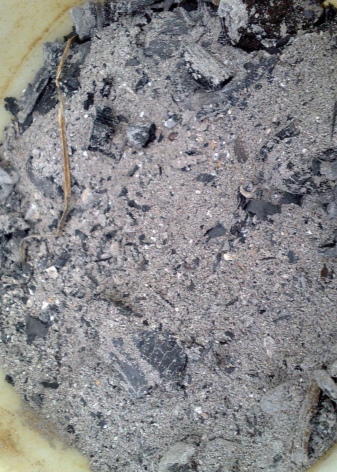

Watering
Ficus lirata is very sensitive to watering, so it is important to keep in mind that excessive moisture leads to waterlogging of the soil, which leads to the death of the plant. It is advisable to irrigate the soil 2-3 times a week as the soil dries out. When watering, you should especially pay attention to the fact that so that the liquid completely soaks the earthen lump. In cold weather, the number of waterings should be reduced - once every 7 days is enough.
It is best to use for this purpose settled or filtered soft water, certainly at room temperature - from the cold, the root system begins to rot.
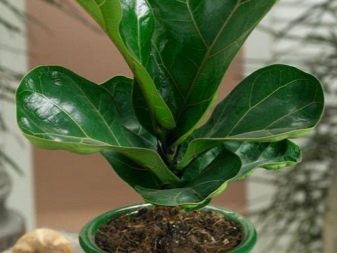

Fight disease
As a rule, with improper care, the plant begins to hurt. Let's get acquainted with the most common problems of the ficus lyrata.
- Yellowing of the leaves. Often such a nuisance is the result of excessively dry indoor air. To fix the problem is quite simple - to carry out regular spraying, wipe the leaf plates with a damp sponge, and also arrange a warm shower from time to time.


- Shredding foliage. With a lack of nutrients, the leaves on the ficus become smaller. If you notice this alarming sign, feed your green pet immediately, and the feeding should be both root and foliar.
Also, make sure there is enough room in the container so that the roots do not bump into the sides of the pot - cramped conditions can be another reason why the leaves become small.
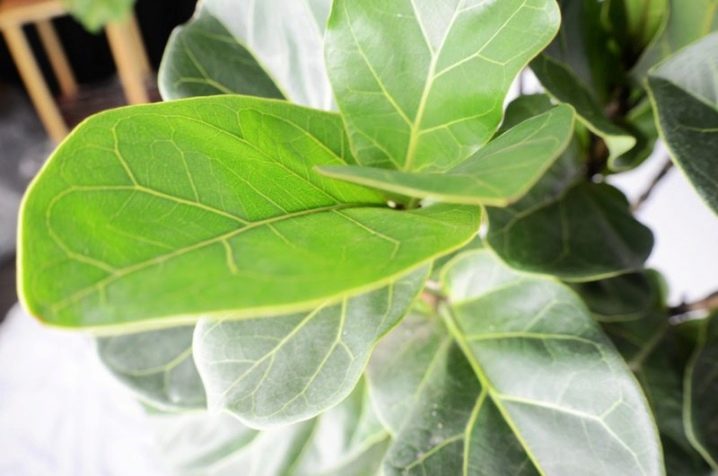
- Dropping leaves. When a plant is stressed by a change in habitat, it sheds its leaves. Lyrata has rather poor adaptive abilities, so, if possible, try to minimize the movement of the plant around the house.
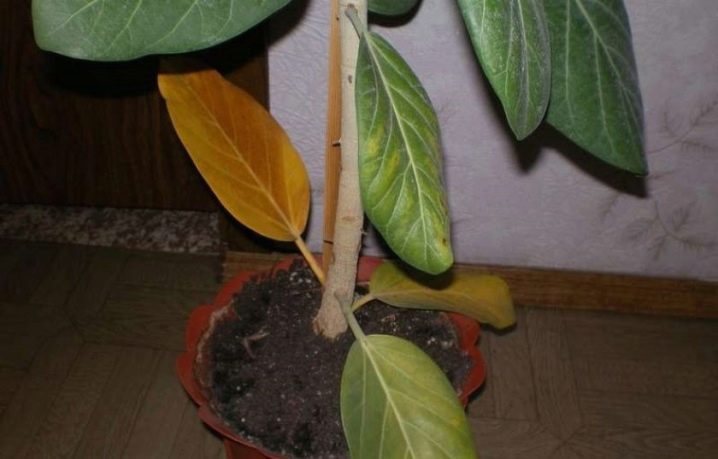
- Burns. From direct rays of the sun, small brown specks form on the leaves. Damaged leaves should be cut off and the plant repositioned elsewhere so that the problem does not recur.
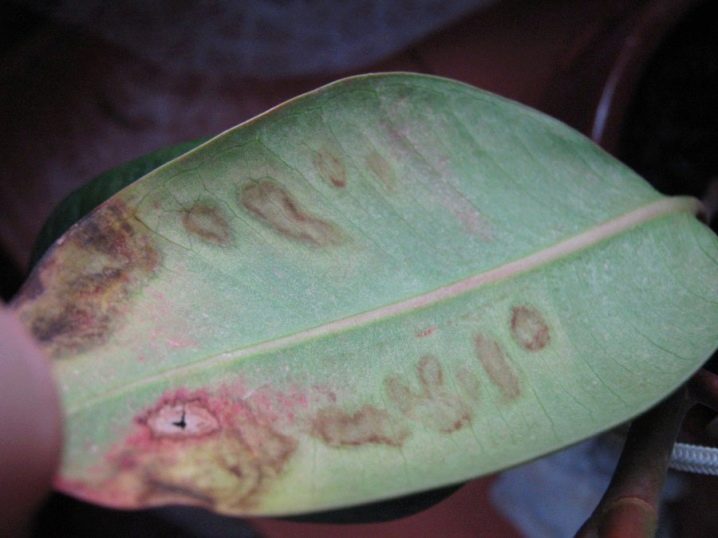
- Fungus. Of all diseases, ficus lyrata is more susceptible to fungal infections. The first signs of such a disease are dark streaks on the surface of the leaves, plaque and suspicious scratches. This problem is a consequence of waterlogging of the soil or placing a flower in a cold room.
To combat fungi, special fungicidal solutions are used, and in case of severe infection, when the leaves are partially blackened, an unscheduled transplant with a complete replacement of the soil may be required.
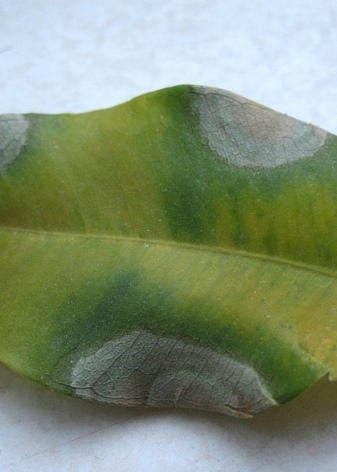

- Pests. Lyrata is most often attacked by spider mites and aphids. To combat them, a decoction of cyclamen helps, but it will be effective only if the affected area is small. In case of serious damage, chemicals such as Vertimek and Mavrik should be preferred.
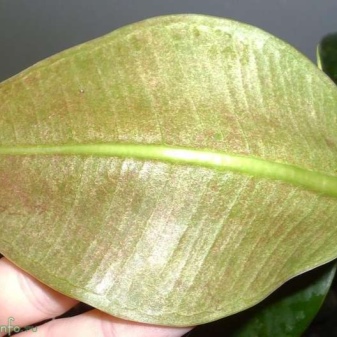

Pruning
Ficus lyrata grows very quickly, so it requires frequent crown formation. Shoots should be pruned regularly at a distance of 1 cm above the leaves. This procedure stimulates the growth of young shoots, as a result, the bush becomes more lush and spreading.
For pruning, you must use a pruner or garden shears. It is important that they are sharp - this allows you to cut in one pass. When using a blunt tool, the stems are crushed, and the shoots lose their decorative effect.
The cut sites must be treated with crushed activated carbon - this will protect the ficus from infection.

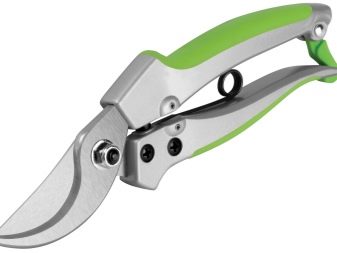
How to reproduce?
Lyre ficus can be propagated in several ways: by seeds, as well as by layering or cuttings. In practice, the first option is practically not used, since the plant blooms only in conditions that are as close to natural as possible, and it is impossible to recreate them in residential buildings and offices. In addition, this process is quite laborious and troublesome - the first shoots appear no earlier than a couple of months after planting, and in order to get a full-fledged plant, it will take more than one year. That is why this breeding option is mainly used by scientists for the purpose of breeding and breeding new varieties of ficus.
Cuttings are the most popular way to reproduce the lyrata. All the necessary procedures are carried out in the spring, when the plant wakes up from sleep and goes into active development and growth. To do this, cuttings of 10-15 cm are cut from a strong mother ficus, so that each has at least two sheets. The sliced pieces are washed under running water at room temperature to wash out all the milky juice, then dried for a couple of hours, and then soaked in a vessel with water.
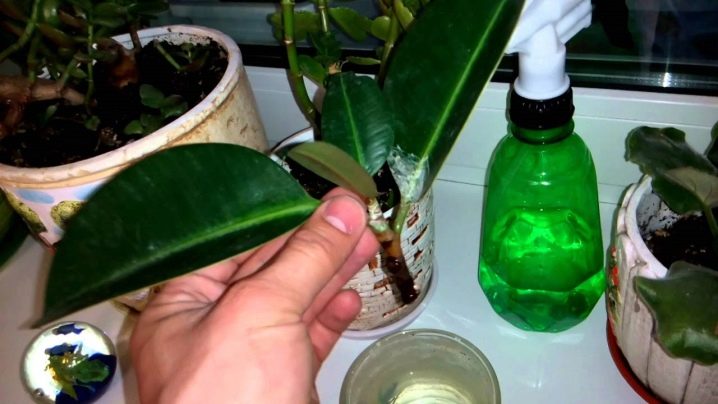
To disinfect the substrate and prevent putrefactive processes, a little methylene blue or an activated carbon tablet should be added to the substrate.
In order for root formation to proceed faster, a solution of "Kornevin" is poured into the water, and all the leaves are cut by half. The jar should be covered with dark plastic wrap - this creates a greenhouse effect that favors the growth of young roots.
Usually after a month you can have good roots - at this time the plant can be transplanted to a permanent place in the ground.
By the same principle, ficus is propagated by leaves.
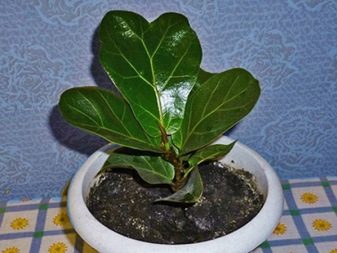
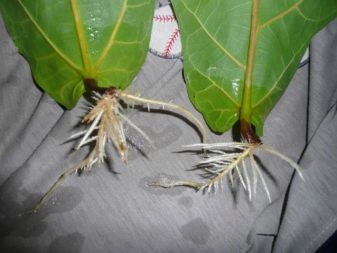
The second most popular breeding method is considered to be layering, but this method is only suitable for growers with extensive experience. To do this, a non-lignified young shoot is selected, all the lower leaves are removed and an incision is made at a distance of about 5 cm.
The milk that appears is washed off with water, the incision site is treated with a root formation stimulator, a wooden stick is inserted so that the incision is not overgrown, covered with wet moss and wrapped with foil. From time to time, sphagnum is moistened, and after a month, roots usually appear - then the sprout can be cut off and transplanted into the ground.

For information on how to propagate lyre ficus, see the next video.































The comment was sent successfully.